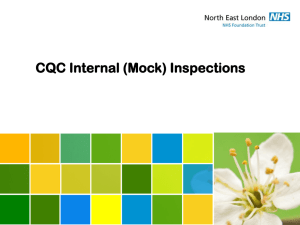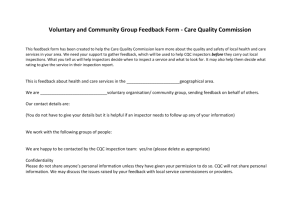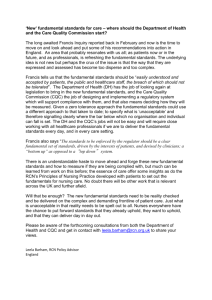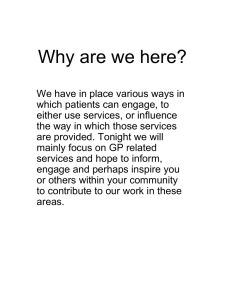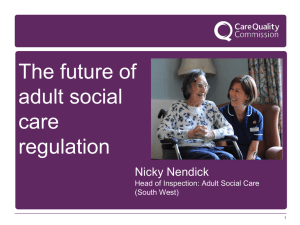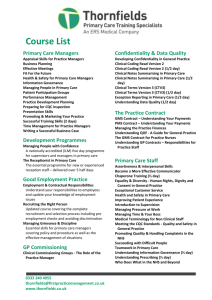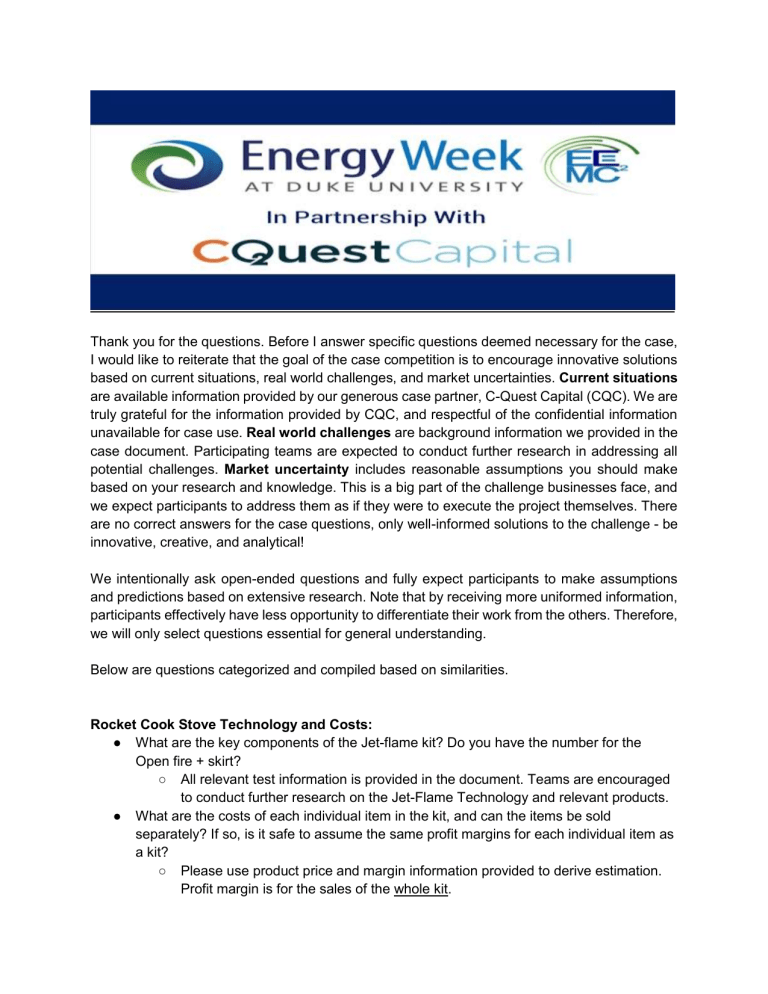
Thank you for the questions. Before I answer specific questions deemed necessary for the case, I would like to reiterate that the goal of the case competition is to encourage innovative solutions based on current situations, real world challenges, and market uncertainties. Current situations are available information provided by our generous case partner, C-Quest Capital (CQC). We are truly grateful for the information provided by CQC, and respectful of the confidential information unavailable for case use. Real world challenges are background information we provided in the case document. Participating teams are expected to conduct further research in addressing all potential challenges. Market uncertainty includes reasonable assumptions you should make based on your research and knowledge. This is a big part of the challenge businesses face, and we expect participants to address them as if they were to execute the project themselves. There are no correct answers for the case questions, only well-informed solutions to the challenge - be innovative, creative, and analytical! We intentionally ask open-ended questions and fully expect participants to make assumptions and predictions based on extensive research. Note that by receiving more uniformed information, participants effectively have less opportunity to differentiate their work from the others. Therefore, we will only select questions essential for general understanding. Below are questions categorized and compiled based on similarities. Rocket Cook Stove Technology and Costs: ● What are the key components of the Jet-flame kit? Do you have the number for the Open fire + skirt? ○ All relevant test information is provided in the document. Teams are encouraged to conduct further research on the Jet-Flame Technology and relevant products. ● What are the costs of each individual item in the kit, and can the items be sold separately? If so, is it safe to assume the same profit margins for each individual item as a kit? ○ Please use product price and margin information provided to derive estimation. Profit margin is for the sales of the whole kit. ● ● ● ● Does CQC fully own Jet-Flame technology (e.g. layout of fan inside), or this technology is owned by Shenzhou Cookstove manufacturer in China? ○ CQC does not own Jet-Flame technology, they purchase the product from the manufacturer. What is the product life cycle of various products used in the Jet Flame kit; Also product life cycle of clean pellet fuel? Can data be provided regarding the lifespan, maintenance requirements, and maintenance costs for the jet flame kits and clean cookstoves? ○ As for Jet-Flame technology, specific information on product lifespan is limited as it is a newly developed product, please make and state reasonable assumptions. Were these cookstoves distributed for free or were the customers required to pay anything? ○ It should be noted that CQC distributed 150k units of rocket cookstoves for free using carbon financing. However, CQC intends to start profitable business moving forward. Distribution channels from previous projects are confidential information, and business plans moving forward should be proposed by participants. Are the efficiency, reduction of cooking time and particulate emission same across cooking different meals for the household same for the day? ○ Tests conducted are based on measuring the energy input during cooking. Terminology & Units: ● Are ton and tonne used interchangeably or is there an expectation to convert between US short ton (ton) and Metric ton (tonne)? (Section ”VCM” / text: “180 million tons”) and (Section “CQC’s first s…” / text: “100 million tonne”) ○ In the document, ton is short ton where tonne is metric tonne. ● What is meant by "profitability long term"? Any specific metric (Margins, Revenue) and any particular timeline? What is the definition of being most profitable? How profitable does CQC expect at the end of a 5-year project?. (in terms of Gross profit or Net Profit?). If CQC expects X% in net profit, please share the full current cost structure? Is the directive to maximize profitability (%) or total profit dollars? ○ Definition of profitability is open to team interpretation - at the minimum, CQC should be making a profit in 5 years. If your team doesn't think it is likely, please explain why and give a reasonable timeline. ● Are the per unit Wood and Charcoal prices provided for large or small quantities? The case mentions a significant difference in price between large and small quantities. ○ The per unit price is for small quantities faced by current customers Emissions & Carbon Trading ● Is VCU (Verra - Standards for a Sustainable Future) the ONLY standard already applied to CQC at Voluntary Carbon Market (VCM) to calculate and certificate its carbon credits from TLC-CQC? For Q6, is there a flexibility to choose among regional, analogous, or ● ● ● international standards? Or do the team have to choose an internationally recognized standard only? ○ The considerations of different methods / programs are expected from participants. We encourage participants to explore different options before finalizing the best one for the project. How will the compliance team track avoided carbon emissions from the stoves? What mechanisms has CQC established to measure and verify the carbon credits being generated from the cookstoves? Does it have teams in these countries or is it partnering with local NGOs to carry out this work? How about the related cost? ○ CQC are open to different tracking systems/ methods. Participants can include discussion on carbon emission verification as part of their solution. What was the time period over which 100 million tonnes of carbon credits as mentioned on page 5 were generated by CQC? Are these credits attributable to the aforementioned 150,000 cookstoves? ○ Time period of a decade for the cookstoves at the time of deal. Are there any previous company financials available or tax information associated with the sale of carbon credits vs physical goods? ○ Specific CQC financial information is confidential and unavailable for the case. Business Model & Financial Modeling: ● What are the implementation timelines of the three stages? Which revenue stream will be mainly in the timeline of 5 years? (Based on 3 stages) ○ For Round 1, participants should focus on Jet Flame Kit distribution. ● Is the Financial Model part of the 6 page solutions document or a separate report? ○ The report can refer to the financial model produced by the team. However, we expect a separate spreadsheet to be submitted. ● What is the time frame to look for analysis (should this be from Jan 2022 or Jan 2021); Shall pandemic be considered in financial modeling and analysis? When does CQC expect to start a 5 year-Project? From which year? Since different timeframes will have different risks. ○ Participants should assume that CQC is planning to launch the project in 2021 (January 2021). ● Does profit need to be shared with the previous funding that went into the distribution of the 150,000 TLC-CQC rocket cookstoves? ○ The 150,000 TLC-CQC rocket cookstoves are irrelevant to the deliverables for this stage of the competition. Customer Profile Clarifications ● What is the rationale for choosing Rwanda, Malawi, and Kenya as the target countries (other than the fact that early adoption tests for Jet Flame inserts in Malawi have yielded encouraging results)? ○ ● ● These are the countries where CQC faced success in the distribution of rocket cookstoves. Out of the 150,000 TLC-CQC cookstoves distributed in the Sub Saharan African region, how many of them are in Malawi, Rwanda, and Kenya? Are these customers located predominantly in rural, urban, or peri-urban areas? The information notes that CQC has distributed 150,000 stoves to-date. Could we have further information on the distribution partners and customer profiles of this business? ○ Specific numbers are not available for the case, participants can assume that a majority of the receivers are located in these countries. Is CQC looking to sell the Jet Flame insert and other accessories to the existing 150,000 consumers of cookstoves, or does CQC only plan to sell Jet-flame Kits to new customers? If yes to existing customers, what would be the cost of the standalone Jet Flame insert and other accessories? ○ CQC’s goal is to launch a business for Jet-Flame Kits. Participant’s solution should provide CQC suggestions on how to do so most effectively. Others ● According to Line 16, Page 7, Jet-Flame Kit improves “thermal efficiency by 53%, boils five liters of water 42% faster, and decreases 94% particulate emissions”. Would you like to share the calculation formula separately for “53%”, “42%” and “94%” here? Besides, if we apply the same formulas, what is thermal efficiency, boiling time decreasing ratio, and emission decreasing ratio for TLC-CQC cookstove? What is thermal efficiency, boiling time decreasing ratio, and emission decreasing ratio for traditional three-stone cookstoves? ○ 𝑜𝑙𝑑 𝑜𝑢𝑡𝑝𝑢𝑡 / 𝑟𝑒𝑠𝑢𝑙𝑡 . 𝑟𝑒𝑠𝑢𝑙𝑡 The calculation is simply 𝑛𝑒𝑤 𝑜𝑢𝑡𝑝𝑢𝑡/ Further information can be found in the source documents. Below are questions that can be answered through conducting further research and reviewing source websites: ● Can the terminologies/attributes of the Global tracking framework be explained (These are cooking exposure, cookstove efficiency, convenience, safety of primary cookstove, affordability, and fuel availability)? ● What is meant by the "ISO voluntary performance target" mentioned in the table? ● What is the cost of 1 kg of pellets in Rwanda? ● What are the urban and non urban areas in Malawi, Kenya, and Rwanda? What is the population in each? ● What is the breakdown of the population with clean cooking who are currently using CQC products, rocket stove, jet-flame kit etc.? Referring to page 9 in pdf shared, section ‘cooking in sub-saharan African region’ ● What is the rural population currently using three-stone fires? ● Is there market research available on the state of last mile delivery in the targeted countries? ● ● ● ● ● ● ● ● ● ● ● ● ● ● ● ● ● ● Other than price, what factors typically influence purchasing decisions for communities in rural areas of Malawi, Rwanda, and Kenya today? What is the information available on safety, affordability, and fuel availability in the last 5 years? Is there similar data for the traditional cookstoves mostly used today? What is the average income and %/budget spent on cooking supplies and fuel today (w/ urban/rural breakdown) by country? What is the estimated/projected reduction of CO2 and PM2.5 per household using Biomass pellets vs. Wood and Charcoal? Is there any information available on CO emissions from the Jet Flame Kit production? Is there any data available on by how much additional % does the Jet Flame insert reduce CO2 emissions when combined with a TLC-CQC cookstove and a traditional three-stone cookstove? Does carbon credit validation take into account life-cycle emissions, e.g. from manufacturing and transportation? What percent of the urban population uses clean cooking currently (broken out by country? Is there data available on the CO2 emissions, environmental, and humanitarian impacts from producing the jet flame kits and clean cookstove across the entire supply chain, from mining to manufacturing to delivery/distribution? Is there any competitor of the product available in the market? Are there any companies that CQC identifies as its competitors? If so, would you like to generally introduce their product, including thermal efficiency, selling price and current market share? Please could you provide some more information about the CQC’s relationship with the carbon verification process? I.e. Do all of the carbon emissions that CQC helps to avoid through cooking ware get verified? Or are some lost in the measurement process? What is the current status of the supply chain in Malawi, Kenya, and Rwanda? This question is related to the delivery cost. Is there any additional information on the manufacture, transportation and distribution of the two products? What sort of sales networks and distribution channels does CQC have in these three countries? Does CQC believe that there may be a future in trading other social offset credits, such as health or humanitarian? What drove CQC’s decision to enter the clean-cooking business in the first place (as opposed to other clean products)? Below are questions that requested for confidential information not available for the public, Please refer to CQC’s website to obtain publicly available information ● What is the assumption of the cost of the stove? And the cost of the skirt? ● Could we have some more information on the key costs involved in the business? ● ● ● ● ● ● ● ● ● ● ● ● Since CQC already sold 150k units of Rocket Cookstove in 1st stage of the project. Please share and explain the finance model and business performance during that period (if applicable)? Can we have access to the stage 1 Rocket Cookstove distribution model? Could we have some additional info/characteristics/profiles of the 150,000 customers? What is the applicable tax rate for income generated through CQC’s business activity in Malawi, Kenya, and Rwanda, and what is the applicable tax rate for income from sale of carbon credits within the global market? Could you please share information on the previous pricing and volumes for CQC’s carbon as traded in the carbon credit market? How much debt and equity does the company currently have? What is the economic arrangement between CQC and any of its operating partners or joint ventures (as referenced on CQC website https://cquestcapital.com/pages/operational-platforms) in Malawi, Kenya, and Rwanda? Since CQC already established a compliance team to track carbon offsets. How different is between forecast and real results? (Error rate?) The information references an assessment of local adoption to clean cooking stoves and clean pellet fuel. Can we have access to the full report/ assessment? What is the country of origin and urban/rural demographic statistics of the 150,000 who have received cookstoves? Did CQC have any notable strategic partners in the development of their stoves? (manufacturing partners, industry competitors, etc.) What are the business models that CQC has experimented with and what has been the experience so far? Or the strategy up to this moment has been to fund the cookstoves entirely through carbon financing? Teams are open to make their own interpretation and decision in their solutions for the following questions: ● Is there any specific growth rate to be considered for financial modeling? ● Can the kit be expanded to include the stove and the skirt? Is there a warranty provided for the jet (if yes, how will they do it, and what will be the cost)? ● Does the business model need to include additional support, e.g. training, community engagement, that helps shape customers’ behaviours? ● Where in the value chain does the CQC lie for their products Jet Flame Kit and clean pellet fuel? Do they also provide servicing of these products as per requirement? ● Should we consider both debt and equity financing?
